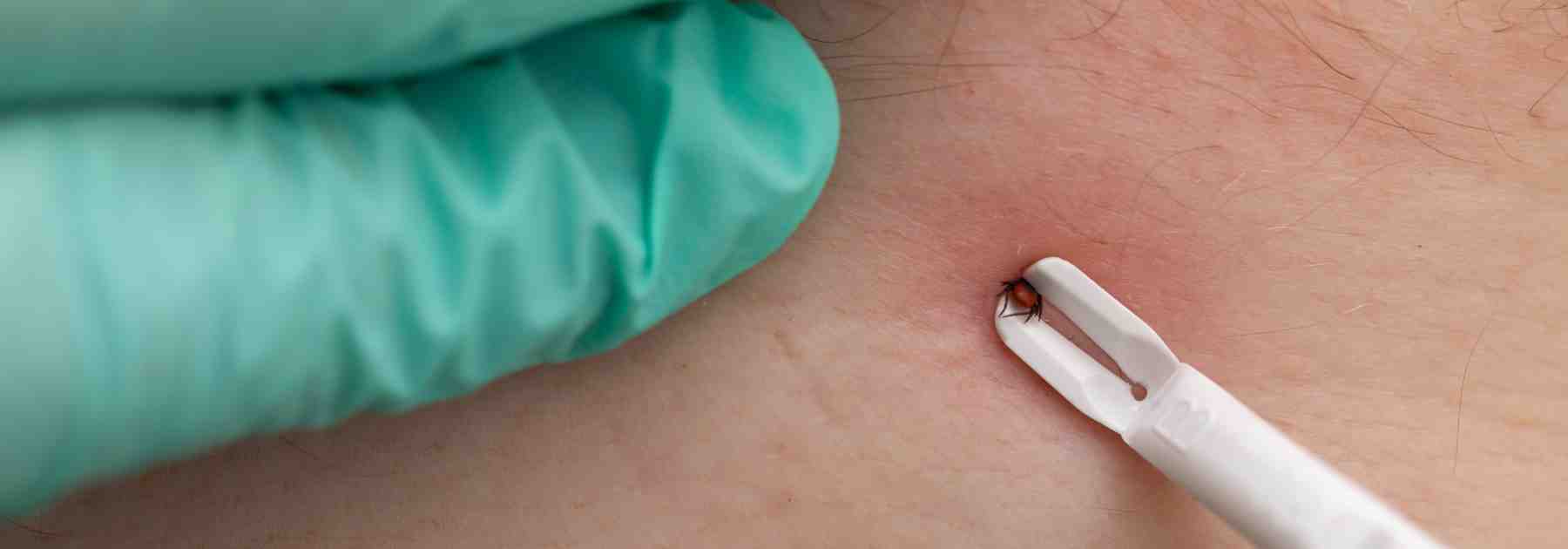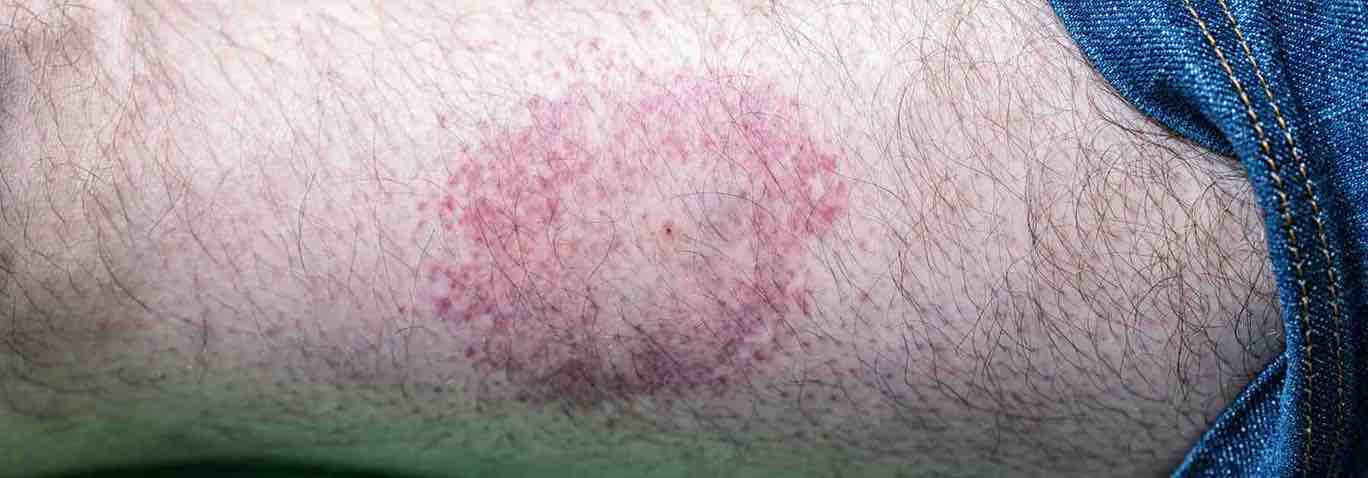Whether you’re exploring the woodlands of Kent or venturing further afield on a camping or hiking trip, keeping safe from ticks should be a priority for all nature lovers. At Eltham Pharmacy, we’re here to help you recognise these tiny parasites and protect yourself and your family from the risks they carry.
So, what does a tick look like? And more importantly, how can you avoid being bitten on your next adventure?
Ticks are small, spider-like parasites that feed on the blood of animals and humans—and they can be found in many parts of the world. Whether you’re hiking through a rainforest, exploring European forests, or on safari in Africa, ticks may be lying in wait.
Unfed ticks are often very small, ranging from 1mm to 3mm, with flat, oval-shaped bodies. They may resemble tiny dark specks on your skin or clothing, making them easy to miss. Once they begin feeding, they swell dramatically and can reach the size of a baked bean, taking on a rounded shape with a greyish or greenish hue.
Globally, tick appearance and behaviour may vary slightly by species, but key features are generally consistent:
-
–> Flat, oval body when unfed
-
–> Engorged, rounded body after feeding
-
–> Eight legs (they are arachnids, like spiders)
-
–> No wings or visible antennae
-
–> Colours vary – from reddish-brown (common in Europe) to black or grey (more common in subtropical and tropical regions)
Some notable tick species you may encounter abroad include:
Ixodes scapularis (deer tick) in North America and Europe – a known transmitter of Lyme disease and anaplasmosis.
Amblyomma americanum (lone star tick) in the USA – linked with ehrlichiosis and even red meat allergies.
Rhipicephalus sanguineus (brown dog tick) – found globally, particularly in warmer climates, and often seen around buildings.
Haemaphysalis longicornis (Asian longhorned tick) – found across parts of Asia and increasingly reported in Australia and the US.
Ticks often hide in long grasses, forest undergrowth, and even on leaves in humid environments. They position themselves on vegetation and wait to latch onto a passing host, such as a hiker, camper, or unsuspecting tourist. Once attached, they crawl to sheltered areas like behind the knees, underarms, groin, or scalp before starting to feed.
Why Ticks Are a Risk
Ticks are more than just an itchy inconvenience—they can transmit serious illnesses, many of which vary depending on where you are in the world. In the UK and Europe, Lyme disease is the most commonly discussed, but travellers may be exposed to additional risks:
Tick-borne encephalitis (TBE) – found in parts of Central, Eastern, and Northern Europe, as well as some Asian countries.
Rocky Mountain spotted fever – a potentially severe illness spread by ticks in North and South America.
Crimean-Congo haemorrhagic fever (CCHF) – transmitted by ticks in Eastern Europe, Africa, the Middle East, and parts of Asia.
Babesiosis, ehrlichiosis, and relapsing fever – spread in various tropical and subtropical regions.
Many of these diseases begin with flu-like symptoms—fever, fatigue, headaches—but can escalate quickly. This is why recognising what a tick looks like, checking for bites regularly, and knowing how to remove ticks properly is vital, especially if you’re travelling through areas where these illnesses are endemic.
At Eltham Pharmacy, we advise anyone planning outdoor activities abroad to prepare thoroughly. This includes researching local health risks, packing effective tick repellents, and considering vaccinations such as TBE, depending on your destination.
Tick-Prevention Tips for Campers, Hikers, and Eco-Tourists
At Eltham Pharmacy, we want your outdoor adventures to be memorable for all the right reasons. Here are our top tick prevention strategies to keep you safe:
1. Dress Defensively
Wearing the right clothing can act as your first line of defence:
-
–> Wear long sleeves and trousers, ideally in light colours so ticks are easier to spot.
-
–> Tuck trousers into socks and shirts into trousers to limit access to your skin.
-
–> Opt for close-fitting cuffs and high collars if possible.
2. Use Effective Repellents
Apply an insect repellent that contains DEET (20–50%), picaridin, or permethrin to exposed skin and clothing. You can speak to us at Eltham Pharmacy for tailored advice and product recommendations.
3. Stay on the Path
Ticks thrive in long grasses and undergrowth. Stick to well-trodden paths and avoid brushing against dense vegetation, especially in high-risk areas like woodland edges or moorland.
4. Perform Regular Tick Checks
After spending time outdoors, do a thorough tick check:
-
–> Check your entire body, especially warm, moist areas like behind the knees, around the waistband, underarms, behind the ears, and the scalp.
-
–> Inspect your clothing, rucksacks, and pets – ticks can hitch a ride on them too.
5. Remove Ticks Safely
If you find a tick, remove it as soon as possible using a tick removal tool or fine-tipped tweezers:
-
–> Grasp the tick close to the skin and pull upwards slowly and steadily.
-
–> Avoid squeezing the body or twisting, as this may leave parts embedded in the skin.
-
–> Clean the area thoroughly and wash your hands.
Never attempt to burn the tick off or use substances like petroleum jelly or alcohol to force it out – this can cause the tick to release more saliva, increasing the risk of infection.
6. Monitor for Symptoms
After a tick bite, keep an eye on the area for signs of infection or a bull’s-eye rash – a circular red mark that may spread. Other symptoms of Lyme disease can include fever, fatigue, and muscle aches. If you’re concerned, don’t hesitate to consult your GP or pop into Eltham Pharmacy for guidance.
7. Get the Right Vaccinations
Before heading to tick-prone areas abroad—especially in parts of Europe or Asia—it’s worth checking if you need a tick-borne encephalitis (TBE) vaccine. This viral infection, transmitted by ticks in certain regions, can lead to serious neurological complications. The TBE vaccine is recommended for travellers spending time outdoors in rural or forested areas, particularly during spring and summer.
The Eltham Pharmacy Travel Clinic team can advise on whether the TBE vaccine is suitable for your destination and to arrange your travel vaccinations in advance.
Book your appointment today.

Additional Protection for Outdoor Adventures
Before heading out on your next camping or hiking trip, consider packing:
-
–> Tick repellent spray or lotion
-
–> A tick removal tool
-
–> Antiseptic wipes
-
–> Long socks and protective clothing
-
–> A mirror for self-checks
We stock a variety of tick-prevention products at Eltham Pharmacy, and our knowledgeable team can help you choose the best options for your needs. Book an appointment
Enjoy Your Adventure with Confidence
Ticks are a part of the great outdoors, but they don’t need to ruin your adventures. Being able to answer the question, “what does a tick look like?” is your first step to staying tick-safe. By combining good prevention habits with quick detection and proper removal, you can enjoy your time in nature with confidence.
Visit Eltham Pharmacy before your next trip for expert advice, preventative products, and travel health essentials. We’re here to help you stay healthy, safe, and ready for whatever the trail brings.
This blog was written on behalf of Eltham Pharmacy by Pharmacy Mentor.



